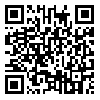Introduction: Students' perceptions of how clinical faculty behave and relate to them (both positively and negatively) were noted to influence their anxiety levels and consequently their ability to learn and perform safely and effectively.
Objective: This study aims to determine the relationship between clinical faculties' manner of teaching behaviors and nursing students' anxiety from students' viewpoint at Guilan University of Medical Sciences in 2007.
Materials and methods: In this descriptive corelational study 171 second, third and fourth year baccalaureate nursing students completed three questionnaires: an investigator designed students demographic data questionnaire, the clinical teaching survey and a self-evaluation questionnaire, designed to measure state anxiety.
Results: Findings of the Pearson's correlations indicated there were moderate negative correlations between the personally(r=-0.63, p<0.0001) and professionally(r=-0.47, p<0.0001) teaching behaviors of clinical faculty and students' state of anxiety. Covariate analysis revealed that indirectly, students' age, marital status and unit of clinical training effected statistically significant on anxiety.
Conclusion: Finding indicated that clinical faculty should be intentionally aware of how their teaching behaviors are perceived by students and influence student anxiety during clinical experiences.
Received: 2014/08/17 | Accepted: 2014/08/17 | Published: 2014/08/17
| Rights and permissions | |
 | This work is licensed under a Creative Commons Attribution-NonCommercial 4.0 International License. |


